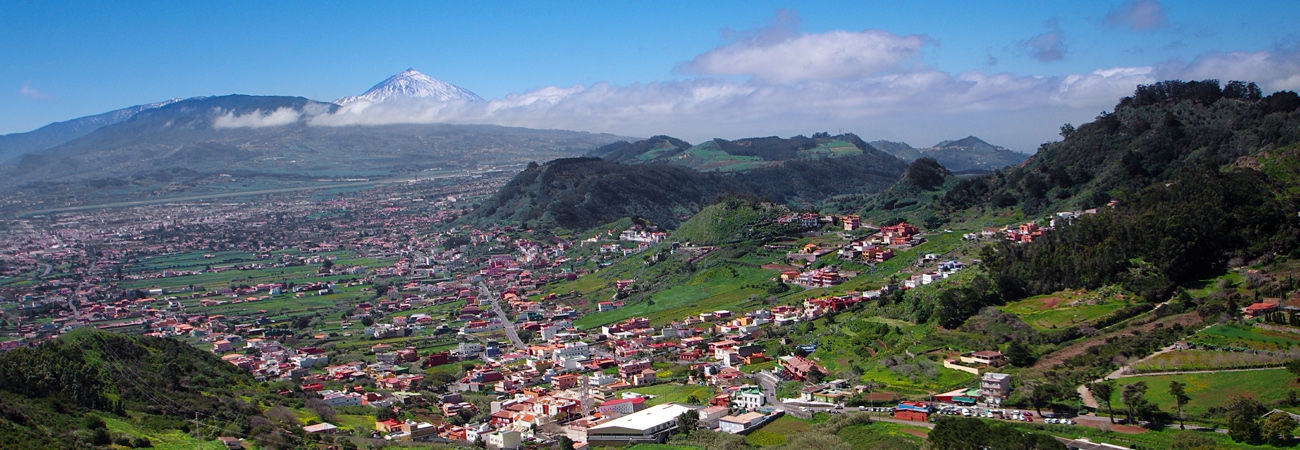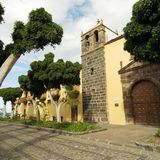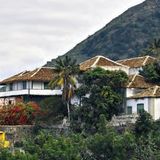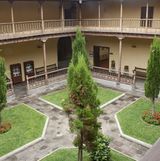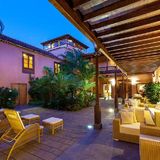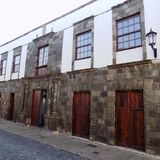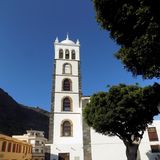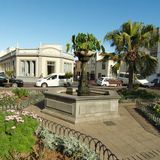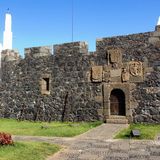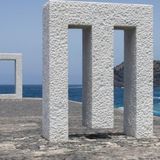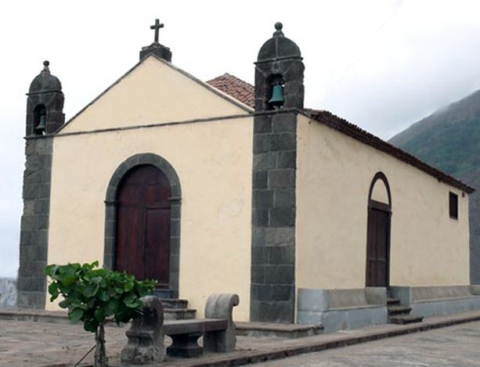Garachico
HISTORIC-MONUMENTAL ROUTE
The town and port of Garachico, founded by Cristóbal de Ponte from Genoa in 1496, jealously guards the remains of its brilliant past in mansions, convents and churches of the finest architectural style. In 1980, H.M. King Juan Carlos I awarded the town the Fine Arts Gold Medal for paying special attention to its artistic and historic heritage and for taking such good care of its streets, squares and gardens. Garachico has won other national distinctions and prizes too. Garachico was declared a place of cultural interest, with the category of "Historic Site", by the Canary Island regional government in March 1994. Unesco is also studying the case for declaring it a World Cultural Heritage Site. The route proposed is as follows: • Church of San Roque - Former convent of Sto. Domingo de Guzmán - Hacienda de El Lamero - Convent of Las Concepcionistas Franciscanas (closed convent) - Casa Ponte - Former convent of San Francisco de Asis (Cultural Centre) - Casa of the Marquises de la Quinta Roja - Casa de Piedra - Church and mother house of Santa Ana - Former Puerta de Tierra Park - San Miguel castle.
CONVENT OF SANTO DOMINGO / CHURCH OF SAN ROQUE AND HOUSE OF THE MARQUISES
CONVENT OF SANTO DOMINGO DE GUZMAN
Tel.: (+34) 922 830 271/922 830 000 (Town Hall)
Visiting Times: Monday to Friday from 10 a.m. to 1 p.m. and from 4 p.m. to 6 p.m.
It was founded by Nicolás Esteban de Ponte y Cuevas in 1601. The convent is built on a hillock, coming from Icod de los Vinos.
Striking features include the seven balconies in the second body of the convent, which rest on bulb-shaped corbels.
Mendizábal's 19th century sale of church land stripped the convent of most of its heritage. The entrance leads us to the current facillities, which house an old people's residential hospital.
The church was built on the site of the original San Sebastián church and survived the volcanic eruption of 1706, due to its location.
The chapel has been fitted out as the municipal auditorium and Museum of Modern Art.
CHURCH OF SAN ROQUE
The solitary church of San Roque is at the entrance to town along the road leading down from Icod de los Vinos.
This simple church, whose original date of construction is unsure, was re-built in 1736. It has a double belfry on the facade and houses the figure of San Roque. Worship of this saint is related to the general jubilation of the local population at recovering from an outbreak of bubonic plague, in 1606, that had ravaged the town of Garachico for five years.
The San Roque pilgrimage and festivities, which have been declared of tourist interest, are held every 16th of August.
HOUSE OF THE MARQUISES DE VILLAFUENTE
Address: Calle Santo Domingo (near the former convent of Santo Domingo)
This is a 17th century, Canary Island style building with fine balconies, lattice-work shutters and barred windows. It contains an interesting historical archive.
EL LAMERO / OLD WATER MILLS / CONVENT OF LA INMACULADA CONCEPCIÓN
HACIENDA EL LAMERO
Address: next to Calle de Santo Domingo.
Its founders were members of the Gallegos family, though it later became the property of the del Hoyo family
The Hacienda was built in the first half of the 17th century and was partially affected by the eruption in 1706.
It has a lovely stone staircase and balcony. Inside, there is a chapel devoted to San Antonio de Padua, founded in 1633 by Alonso de Ponte y Jiménez.
OLD WATER MILLS
Address: Avda. Marítima and another one near the Calle de Santo Domingo.
The old Water Mills are so called because they were the end of a series of buildings that were joined by a water channel designed to move the components of the machines.
CONVENT OF LA INMACULADA CONCEPCIÓN
Address: Esteban de Ponte- Tel.: (+34) 922 830 273
Visiting Times: You can only visit the chapel.
This closed convent is devoted to San Pedro Apóstol and San Cristobal. The original building, dating from 1643, was destroyed by the 1706 volcanic eruption and a fire three years later.
It was rebuilt in 1749, thanks to Bishop Guillén, and was opened in the same year. It has a fine mullioned window at one end.
The single nave, Mudejar style chapel is presided over by the figure of Nuestra Señora de la Concepción, an early 19th century carving from Seville that is in the central niche of the reredos, which dates from the first half of the 18th century.
The figure of Nuestra Señora de La Luz is in the choir. According to local tradition, she appeared in Malpais de Isora (Guía de Isora) in 1570. She was jointly worshipped in both Garachico and Guía de Isora for a long time. Another interesting feature is the carving of San Diego de Alcalá (17th century) by Martínez Montañez.
FORMER CONVENT OF SAN FRANCISCO DE ASIS and GARACHICO TOWN HALL
FORMER CONVENT OF SAN FRANCISCO DE ASIS and GARACHICO TOWN HALL (Cultural Centre)
Address: Glorieta de San Francisco.
Tel.: (+34) 922 830 001
Fax: (+34) 922 831 301
Visiting Times: Monday to Friday from 10 a.m. to 7 p.m. - Saturday from 10 a.m. to 3 p.m.
Municipal Library: Monday to Friday from 4 p.m. to 6 p.m.
Municipal Archives: Monday to Friday from 9 a.m. to 3 p.m.
The Franciscan convent and church of Nuestra Señora de Los Angeles were founded by Cristóbal de Ponte, from Genoa, and Ana de Vergara in 1524. It is the oldest of the five convents that were built in the town.
It has recently been restored by the Department of Fine Arts. It has two stone work doorways on the main facade and extensive heartwood cloisters inside, with fine balconies and outstanding gargoyles and pillars.
The church of Nueatra Señora de Los Angeles, laid out in a Latin Cross formation, has an elegant and austere facade. It has a single nave, although it does have a side chapel - La Veracruz - which is just as big. The chancel has a Mudejar moulded ceiling. The main reredos holds the figure of Nuestra Señora de La Luz, one of the oldest figures in Garachico, found by a boatman in 1525, on the south coast of the island.
It is currently the Cultural Centre and houses the Municipal Library, the Municipal Archives, the Natural Science Museum, the Local History Museum and an exhibition hall.
The Town Hall in next to the former convent of San Francisco (Cultural Centre), with its neo-classical style facade. Interesting interior features include the decoration in the main assembly hall.
CASA DE PONTE
Address: C/ Esteban de Ponte, 34
It was founded by Cristóbal de Ponte and rebuilt in the 18th century.
The most significant features include the square turret, from which an eye could be kept on ships coming into port. The facade is interesting too, with six windows and a stone staircase. The house contains valuable furniture, porcelain, and paintings from the 17th and 18th centuries.
FORMER CONVENT OF SAN JULIAN
Address: Calle de Esteban de Ponte, 31
Visiting Times: It is a private house.
This old Augustinian convent dates from the 17th century and has been damaged by several fires. It was also a Latin tags college from 1640 until it disappeared in the 19th century.
The building is currently a private house.
CASA OF THE MARQUISES DE LA QUINTA ROJA
Address: Glorieta de San Francisco
The exact date of the original construction is unknown, sometime in the 17th century. It was inhabited by the first Marquis, Cristóbal de Ponte y Llarena.
The present building is 18th century, as the original was almost completely destroyed in the eruption of 1706. It was rebuilt from the original plans.
Interesting features include the tooled heartwood in the frames and the lookout with Mudejar mullioned windows.
There is a stately home out of the town centre, along the road to Los Silos, which is known as the Casa de la Quinta Roja, in a banana growing area, which dates from the first half of the 17th century. This was unaffected by the eruption of the volcano.
This has a Mudejar moulded ceiling and a small shrine from 1620, known as the San Cristóbal Hermitage.
CASA PALACIO OF THE COUNTS DE LA GOMERA
Situated opposite Plaza de la Libertad, building started at the end of the 16th century and was finished in the second half of the 17th century.
The original owners were members of the Ponte family, but it later fell into the hands of the Counts of La Gomera by marriage.
The work was done by Luís and Diego Báez Marichal, stone masons from Gran Canaria, under the orders of master builder Antonio Pérez. It was damaged in the eruption of 1706 and rebuilt.
The first part of the facade is an a reasonable state, where you can see the central doorway, with walls of Corinthian columns, crowned with capitals and carefully symmetrical friezes. The second part of the facade and the interior have been carefully restored in recent years.
CHURCH AND MOTHER HOUSE OF SANTA ANA
Tel.: (+34) 922 830 244
This lovely church was founded by Cristóbal de Ponte in 1520 and, despite the severe damage it suffered during the eruption of 1706, the foundations were used for rebuilding it.
The stone work was finished in 1541. The elegant facade combines Plateresque and renaissance features.
What is striking in the interior is the harmounious layout of arches and pillars and the Mudejar moulded ceiling. In the chancel, a classical tabernacle surrounds the Crucifixion, a carving by Martín de Andújar from Seville (first half of the 17th century). There are figures of Santa Ana, Patron Saint of Garachico, and San Joaquín on either side of the tabernacle, both from the hand of José Luján Pérez, figure artist from Gran Canaria (1756 - 1815).
The chapel of Nuestra Señora del Carmen has an interesting Baroque reredos with a 17th century carving of the Virgin, which is worshipped by fishermen.
The chapel of El Cristo de la Misericordia houses one of the most worshipped figures in Garachico, a Christ from Mexico, made in corn paste by the Tarasco Indians of Michoacan. Ever since the mid 17th century, special fiestas are held in their honour every five years. There are three 17th century paintings in the reredos.
Another interesting feature is the reredos of the Chapel of El Santísimo, with a figure of San Francisco (early 17th century) and a 16th century Processional Monstrance from the convent of Santa Clara, which no longer exists.
PLAZA DE LA LIBERTAD
The square has gardens and a pavilion built in 1912, the lower part of which is now a kiosk.
At one end of the square is a monument to Venezuelan liberator Simón Bolivar, the first to be erected in Spain. It is the work of sculptor Juan Jaèn Díaz and was unveiled in 1970.
Venezuela had welcomed many migrants from Garachico and the forefathers of this American hero were born in the town.
The bronze crests of the countries liberated by Bolivar are set into the paving of the square.
PLAZA DE JUAN GONZALEZ DE LA TORRE
PLAZA DE JUAN GONZALEZ DE LA TORRE (Former "Puerta de Tierra")
Address: near San Miguel castle.
The former Puerta de Tierra park has the Plaza de Juan Gonzalez de la Torre as an entrance. The park contains the stone structure that was designed to control passengers and goods that came in and out of the port. It dates back to the very origins of the Port of Garachico itself.
There is an old wine press in the gardens that used to belong to the hacienda de San Juan Degollado. A so-called Poets' Corner has been created too, with a bust of Rafael Alberti.
CHURCH OF NUESTRA SEÑORA DE LOS REYES
In the upper part of town, near the above-mentioned square, this church first appears in the records in 1586, and had to be rebuilt after the 1706 volcanic eruption.
This simple church has a figure of Nuestra Señora de los Reyes, accompanied by the Three Wise Men, an anonymous work form the 17th century, and a series of oil paintings.
SAN MIGUEL CASTLE / CHURCH OF SAN PEDRO DE DAUTE
SAN MIGUEL CASTLE
Address: Avenida de Tomé Cano
This is a square fortress that dates back to the 25th of July, 1575, when Royal Letters from Felipe II authorised the mayor, and later magistrate of Tenerife, Fabián Viña Negrón, to start building works. The entrance gate has different crests: in the centre, as the main coat of arms and the best work, is the coat of arms of Emperor Carlos I of Spain and V of Germany, also used by his son Felipe II.
Occasional art exhibitions are held inside. It has two spacious halls with half-pipe domes.
CHURCH OF SAN PEDRO DE DAUTE
Address: San Pedro de Daute district.
Historic description: The church is out of the town centre, in the district of San Pedro de Daute. Access is via the road that goes up hill from close to the harbour. Historically, it was the first church to be built in Garachico, as it was started at the end of the 15th century, and was unaffected by the eruption of 1706.
Bishop Arce made it into a parish church in 1514. It contains a carving of San Pedro Apóstol, of the Canary Island School, and a remarkable silver lamp.
MONUMENT TO THE MIGRANT CANARY ISLANDER
Address: Near the fishing harbour.
The monument is near the fishing harbour, in the area of Risco Partido, next to the road to Los Silos.
It was erected in 1990 by Los Chicharros Mensajeros, and is the work of sculptor Fernando Garciarramos.
This is also an excellent lookout point with a panoramic view of the town, the port and the lava flow from the eruption of 1706.
Tensei Tenmoku
Sculpture by Japanese artist Kan Yasuda, entitled Tensei Tenmoku or Door without Door, exhibited on the esplanade adjacent to the fish quay. This minimalist artwork in Carrara marble, which blends in with the urban and seafaring landscape of the town and port of Garachico, was commissioned by the Cabildo Insular de Tenerife (Tenerife Island Government) and unveiled in 2002.







